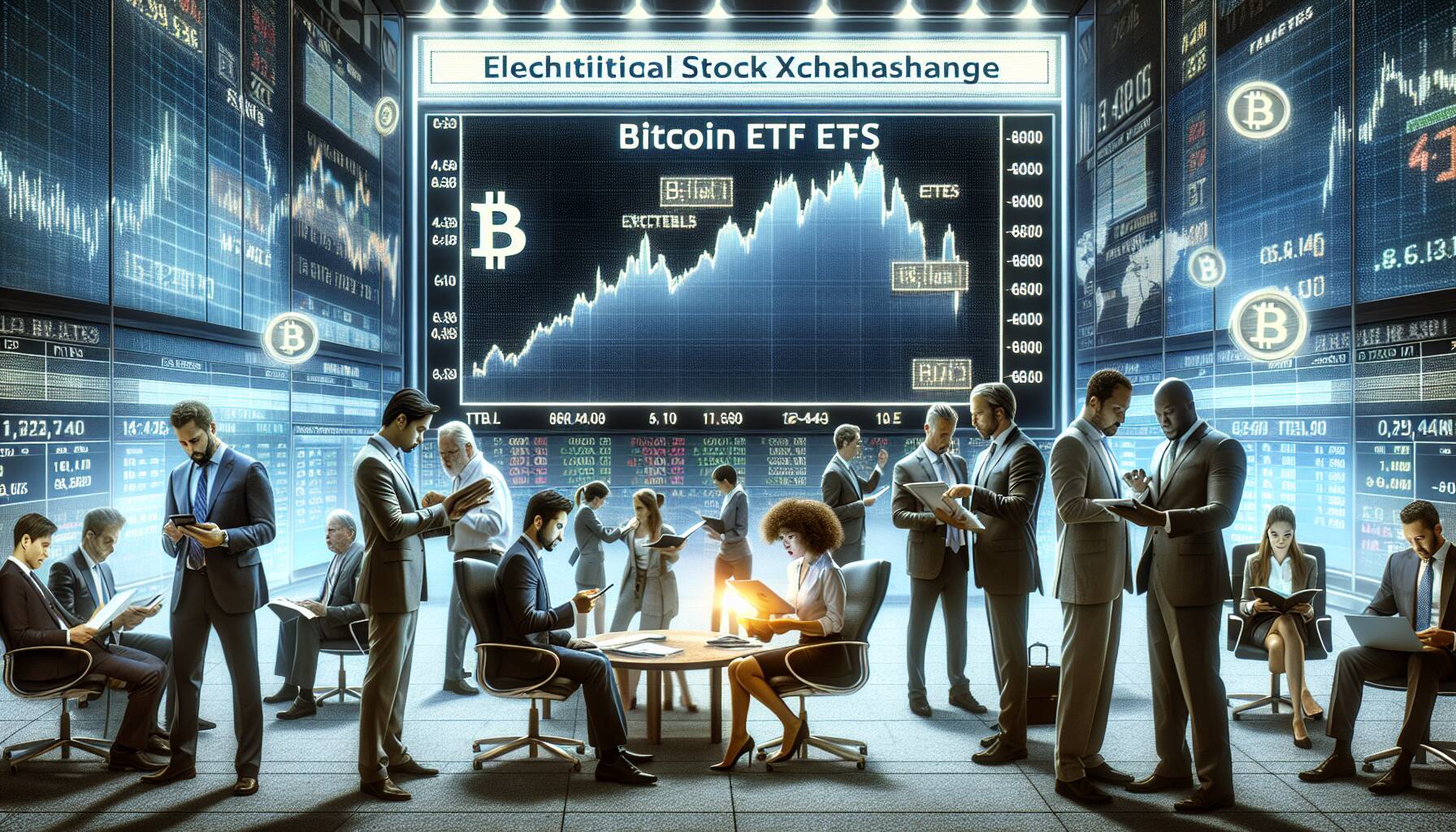In a significant development for the cryptocurrency landscape, U.S.-listed spot bitcoin exchange-traded funds (ETFs) experienced a remarkable surge, recording $667.4 million in net inflows on May 19. This surge marks the largest single-day total since early May, signaling a renewed wave of institutional interest in the digital asset realm. Notably, a substantial portion of these inflows—$306 million—was funneled into the iShares Bitcoin Trust (IBIT), which now boasts impressive net inflows of $45.9 billion, according to data compiled by Farside Investors.
This resurgence in capital comes on the heels of bitcoin’s striking price performance, as it maintained trading above the $100,000 mark for an impressive 11 consecutive days. Such stability has played a crucial role in rejuvenating market confidence among investors. Adding to this momentum is the growing appeal of the annualized basis trade, a strategy where investors take long positions in the spot ETF while simultaneously shorting bitcoin futures contracts on the Chicago Mercantile Exchange (CME). With yields approaching an enticing 9%, nearly double the figures seen in April, activity in this strategy has become more pronounced.
As reported by Velo, the recent uptick in basis trade activity has led to increased trading volumes in CME futures, which clocked in at $8.4 billion—or roughly 80,000 BTC—on Monday, marking the highest trading activity since late April.
The burgeoning open interest, which now stands at 158,000 BTC, reflects a gain of over 30,000 BTC contracts from the prior month and underscores the growing appetite among traders for leveraged and arbitrage strategies. However, it is worth noting that both futures volumes and open interest are still trailing behind the heights witnessed during bitcoin’s all-time high of $109,000 in January, indicating ample room for further growth in the market.
This uptick in basis and increased trading activity suggests that the market may be on the verge of a broader recovery, especially as it entices back players who had exited earlier in the year when the basis narrowed to below 5%. Interestingly, recent 13F filings revealed that the Wisconsin State Pension Board had previously exited its ETF position in the first quarter, a likely response to the less favorable basis trade environment. With the recent expansion of the basis spread from 5% to nearly 10%, the possibility that they have re-entered the market in Q2 to leverage improved arbitrage opportunities seems increasingly plausible.

Renewed Institutional Interest in Bitcoin ETFs
The recent trends in the Bitcoin ETF market indicate significant movements and potential impacts for investors and the broader market.
- Massive Inflows:
- U.S.-listed spot bitcoin ETFs saw $667.4 million in net inflows on May 19, the highest since May 2.
- Nearly $306 million of these inflows targeted the iShares Bitcoin Trust (IBIT), which now totals $45.9 billion in net inflows.
- Market Confidence Boost:
- Bitcoin’s price stability above $100,000 for 11 consecutive days has restored market confidence.
- This renewed demand among institutional investors may provide new opportunities for retail investors as well.
- Attractive Basis Trade:
- The annualized basis trade yields approached 9%, nearly doubling April numbers.
- This strategy has become more appealing, as evidenced by increased trading activity and volumes on CME futures, which hit $8.4 billion.
- Growth Potential:
- Despite the recent increase, both futures volume and open interest remain below the peaks observed when Bitcoin reached an all-time high of $109,000.
- This suggests there is potential for further growth and market participation.
- Return of Former Participants:
- The upswing in the basis indicates a reinvestment trend among market players who exited earlier in the year.
- Recent data suggests significant shifts in investment strategies, including those from organizations like the Wisconsin State Pension Board.
The evolving landscape of Bitcoin ETFs and futures trading could influence personal investment decisions, risk strategies, and market participation for both institutional and retail investors.
Spot Bitcoin ETFs: A New Dawn for Institutional Investors
The latest surge in U.S.-listed spot bitcoin ETFs has sparked considerable excitement amongst investors, reflecting a significant shift in market sentiment. With $667.4 million in inflows recorded, particularly into the iShares Bitcoin Trust, we are witnessing a revitalization of institutional interest that many had predicted but few had anticipated happening so swiftly. The phenomenon bears some resemblance to previous ETF trends in the financial landscape, notably in how it could benefit both seasoned traders and newcomers alike.
Comparing Historical Contexts – This resurgence parallels the early days of gold ETFs, where institutional players flocked to assets as a hedge against inflation and market volatility. While bitcoin remains more volatile than gold, the newfound inflows suggest that institutions are increasingly viewing crypto as a legitimate asset class. The yield on the annualized basis trade, nearing 9%, only adds to the appeal. However, this edge must be juxtaposed against traditional assets, where liquidity and stability often circumvent the erratic nature of cryptocurrencies.
Pros and Cons of Rising Activity – On the upside, the increasing volumes of CME futures contracts indicate a growing appetite for sophisticated investment strategies like leveraged and arbitrage trading. Conversely, the current volumes, despite their impressive growth, are still significantly lower than the euphoric highs witnessed earlier this year. This signals a cautious market, suggesting that while institutional interest is evident, many players are still hesitant, creating a mixed landscape for potential investors.
Furthermore, the retreat of entities like the Wisconsin State Pension Board from the market illustrates the underlying risks. Their prior withdrawal due to an unfavorable basis trade environment raises the caution flag, as institutions must consistently evaluate their positions in reaction to shifting market dynamics. Despite the current uptick in bitcoin’s price, external factors such as regulatory decisions and macroeconomic trends could swiftly alter the bullish sentiment.
Who Stands to Gain or Lose? – Active traders and seasoned institutional investors stand to gain significantly from this environment, as strategies like basis trading become more lucrative. Retail investors, drawn in by the burgeoning confidence and price performance, might also reap the benefits—provided they remain informed and cautious. On the flip side, institutions that hesitate to adapt quickly or those entering the market late risk missing out on profits or, worse, incurring significant losses if the market swings unpredictably.
In essence, the recent inflows and upturn in bitcoin ETF activities signal a burgeoning trend; however, both institutions and individual investors must navigate a complex ecosystem where opportunities come hand-in-hand with risks. While the current market trajectory appears promising, maintaining a watchful eye on emerging data and trends will be crucial for making informed investment decisions.















